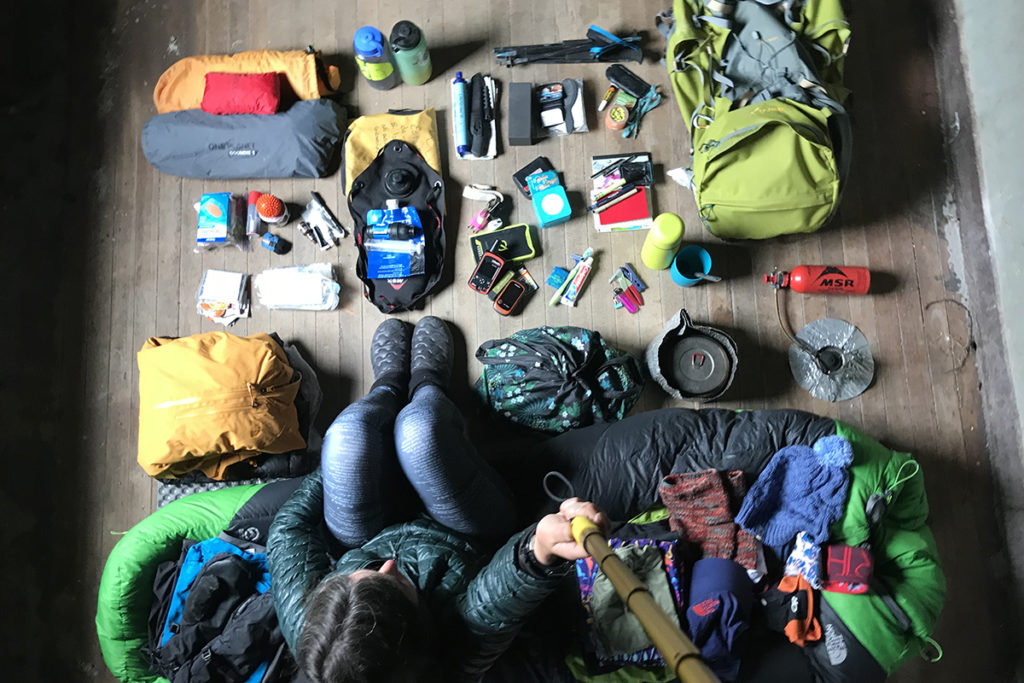Australian Woman Attempts Epic Trek From Argentina to Alaska
Lucy Barnard can’t really explain why, one day, she decided to
take five years to trek all the way from Argentina to Alaska. She just wanted to.
Barnard, who grew up in Brisbane, Australia, officially began the journey in February 2017 and, as of summer 2019, is making her way through the mountains of Peru. It’s a journey that no woman has completed, and she hopes to be the first.
“I find that, more and more, I speak with friends who don’t
give themselves permission to do things just for the experience,” she said.
“They need a bigger, grander reason. My reason was that I just wanted to.”
There have been ups and downs during her trek, though — both
literally and figuratively. In the first year, Barnard had traveled 1,000 of
the 30,000 total kilometers but was suffering from water poisoning and
equipment failure. Instead of pushing through or giving up, Barnard decided to
spend a month recovering in a nearby town. There, she met a woman who took
Barnard under her wing and care until she was healthy again.
Barnard has plenty of similar stories to tell.

Just this year, she arrived in a town in the middle of the
desert, exhausted from trudging through the heat, only to find out there were
no spots to camp. Desperate, she went to a nearby resort and asked if she could
camp outside. The family who owned the resort agreed.
That night, Barnard got food poisoning and became very sick.
When a worker found her ill, they went and got the family, who provided
medication and care until she was healthy enough to continue her journey back
into the desert. Even then, they sent local police to find Barnard in the
desert and provide her with more water. To this day, she still exchanges letters
with the family.
“What I enjoy the most is being in the towns and meeting
people, experiencing the general kindness of people and humanity,” Barnard
said.
Prior to her attempt to walk the length of the Americas,
Barnard worked full time and spent her weekend hours between Friday night and
Monday morning out rock climbing and canyoning with a community of fellow
adventure lovers. When she started her journey, she was fit and had plenty of
advice and support from other athletes.
The most important things she had to learn about were the
varying environments and safety protocols in the areas she would be walking
through and what equipment to take.

To keep weight down, Barnard travels with what she calls “the bare minimum and a few essentials.” Those essentials include a journal (to keep track of important dates and experiences), a thermos for water and an inReach® satellite communicator.
Barnard purchased an inReach device per the advice of a
friend who works in the safety and risk management field.
“One thing that’s really important to survival is timing and
knowing how long you have until help is going to arrive,” Barnard said. “My
friend said that with the inReach, rescue organizations can save critical time
by finding out what you need and what to bring with them. And then they can
tell you how far away they are, so you can count down the minutes or hours
until they arrive. Sometimes that can be the difference between surviving and
not surviving.”
Recently, Barnard discovered how inReach can be used for
enhancing travel safety as she made her way through territory she surmised
could be dangerous due to possible ongoing military operations.
“I used my inReach to write to my friend and ask him how far
away I needed to be and if I was in immediate danger,” she said. “He was able
to put my mind at ease and set some parameters about where I needed to walk and
how far away I needed to stay.”

Over the course of the journey, there have been times when
Barnard has gone without human contact for up to three weeks — except for the
company of her Australian cattle dog, Wombat, and the two-way communication on
her inReach device.
“I write back to my mom and let her know that I’m OK,” she
said. “And then if people are worried, they can ask my mom and she can give
them an update. That’s really handy.”
She also posts to Twitter® from her inReach device, which she said helps bring her followers along the journey with her. And all of her tracks are shared on her MapShare™ page.
“The MapShare really puts this into perspective,” Barnard
said. “I can see that I’ve come such a long way, and I find that to be really
motivational and drive me forward.”
She also uses the Earthmate® app for planning purposes.
“It’s really nice because it tells me what the hill climbs
are like, so each night I can check to see if I’m going to have a hard day or
an easier day, and that will determine whether or not I get up at 5 a.m. or a
little bit later,” Barnard said.
So far, Barnard has walked pristine beaches, watched
dolphins playing in the ocean, trekked through long and harsh deserts, climbed
mountains upon mountains and slept under the stars to the…
